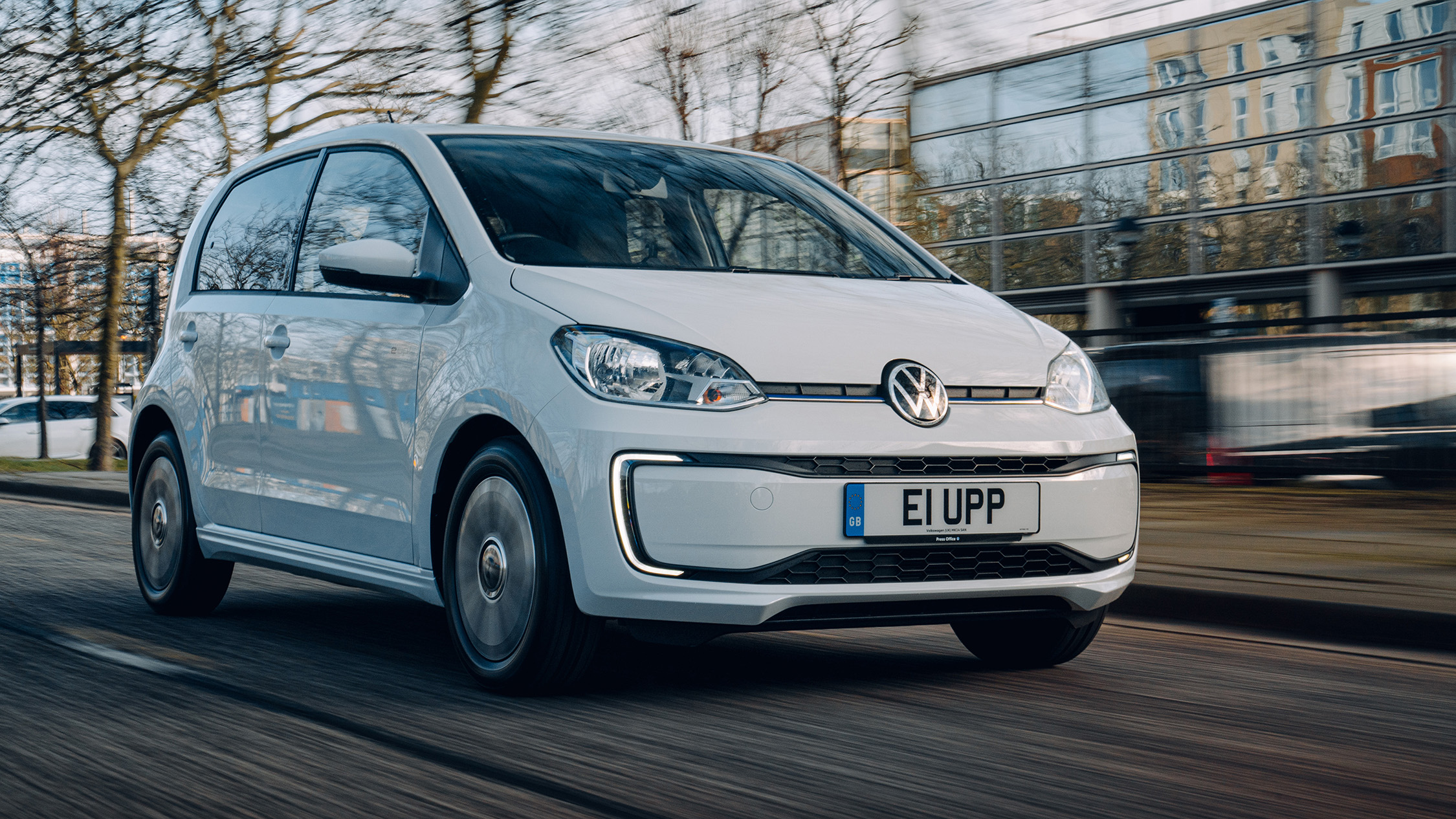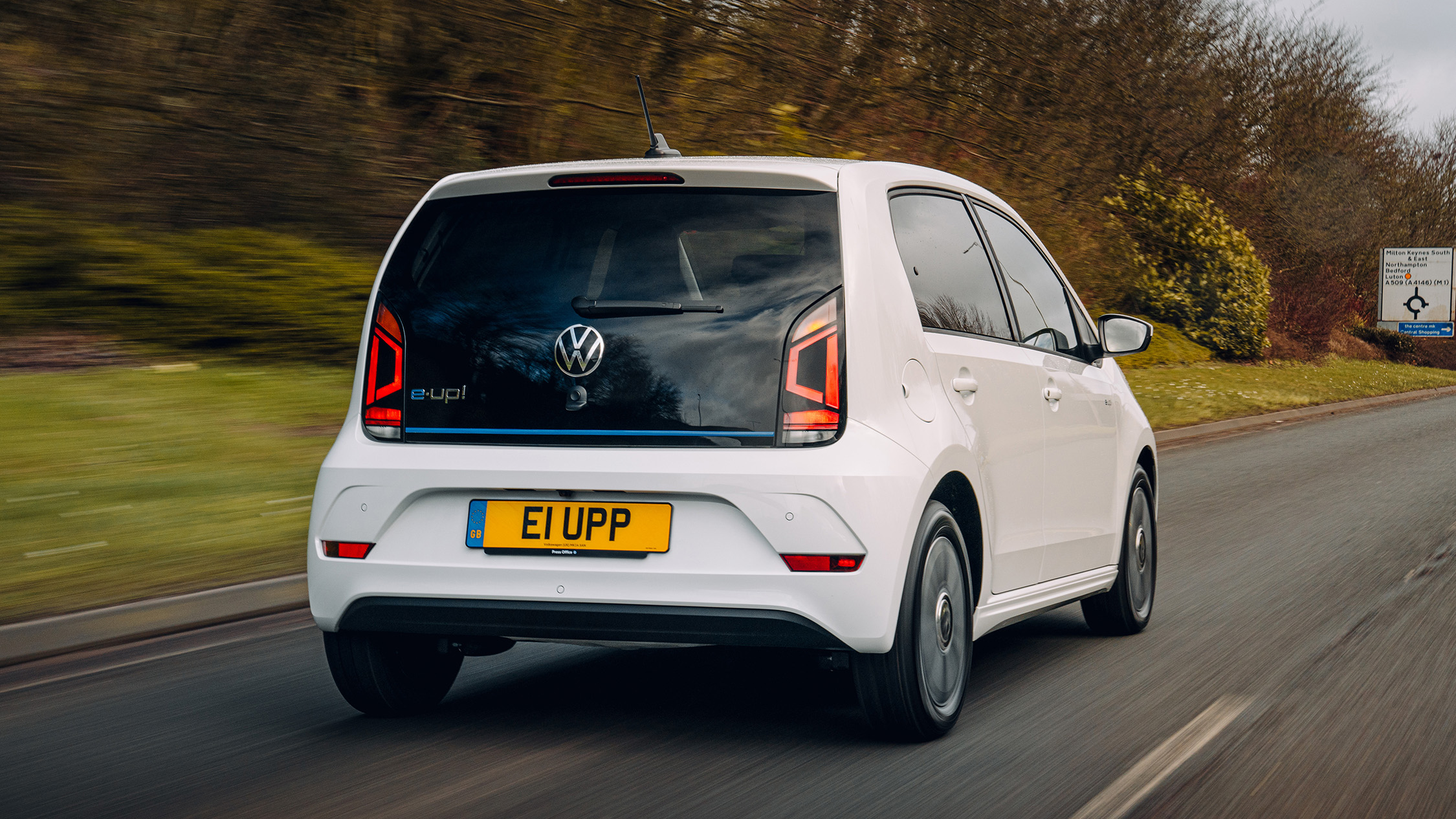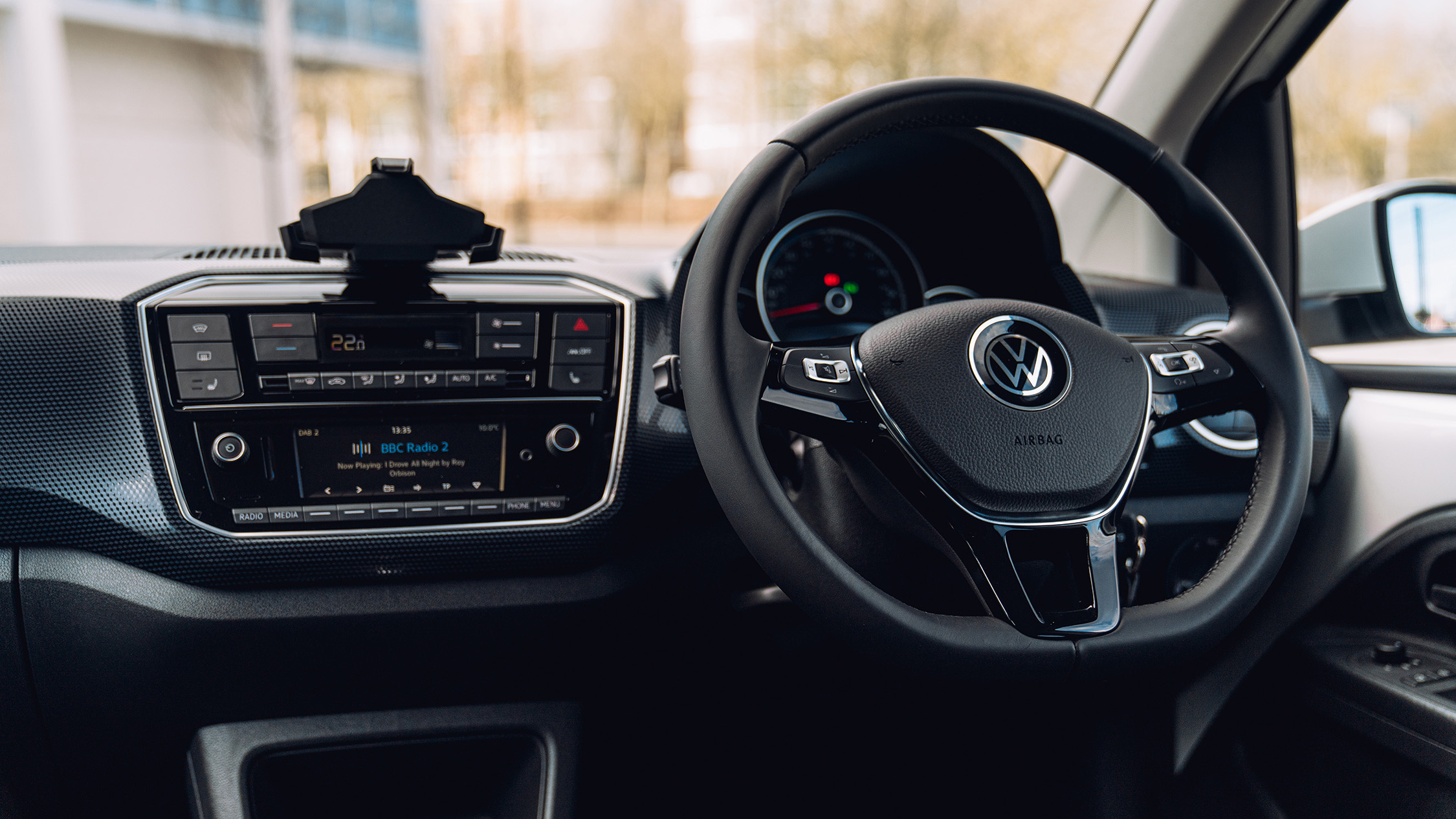
Volkswagen e-Up review
Driving
What is it like to drive?
The e-Up’s lucky stroke in life is to be based on the best city car. The petrol VW Up is already an extremely well-engineered product. It rides extremely maturely. For a bluff-looking box, it’s reasonably quiet, even on the motorway. It has a feeling of grown-up solidity about the driving experience, and all told it’s actually better-resolved and more satisfying to drive than a fair few superminis that are supposedly from the class above. Yep, looking at you, Vauxhall Corsa.
The e-Up is ever-so-slightly less good, if you’re really into how your car handles. Though the weight is low-set, there’s a lot of it, so it feels ponderous in bends. Oddly so, like walking a border collie that’s as clumsy as a Newfoundland. You expect a little runaround like this to feel cheeky, alert and poised, but the e-Up’s not game for any kind of playtime. On the plus side, it’s more sure-footed in a crosswind, and you don’t have to manage it a lot to keep straight’n’true in your lane.
Performance is leisurely, but adequate. With 82bhp on board, the power output is closer to the standard Up 1.0 petrol than the 113bhp Up GTI. Even though that urge is delivered more sharply than the petrol engine, it’s still more of a building surge than a press-and-go zoomer. That’s because while peak power is 82bhp, the car only generates that when you flatten the not-so-loud pedal. In everyday pootling, the motor develops just 54bhp.
Still, that in turn means that while you’ll be winning no YouTube drag races, the e-Up finds the right balance in town. Nippy enough to hit the gaps, but not jerky or tricky to pilot smoothly. VW claims 0-62mph in 11.9 seconds, and the top speed’s a mere 81mph, but for urban dogfights, the 0-30mph getaway is plenty brisk enough.
You can manage the performance and the braking, despite this being a basic EV. There are three driving modes: Normal, Eco (top speed of 71mph) and Eco Plus (now you’re limited to just 56mph), the latter two dumbing down the powertrain to conserve range, and even limiting the use of the air-conditioning. We found the car most preferable in Eco Mode around town – the performance is enough to stay within limits and keep up with traffic even in dual-carriageway merging, but you’re not denting the range unduly. Meanwhile, flicking the transmission lever sideways dials up the regenerative braking power from D1 to D2 or D3. We’d ignore that and just go straight for the ‘B’ setting, found by tugging the lever back. This ‘Brake’ mode gives max regen and means you barely have to touch the brakes, if you’re looking well ahead and anticipating the lights. It feels terribly virtuous, if you’re prepared to concentrate. There’s not much to distract you inside anyway.
If you do need to call upon the brakes, they’re mushy underfoot and feel ever-so-slightly overawed by the e-Up’s thickset 1,235kg weight. Still, for the car’s inner-city, or even inter-village remit, they’re fine. The e-Up thrives on an everything-in-moderation mindset.
Featured







